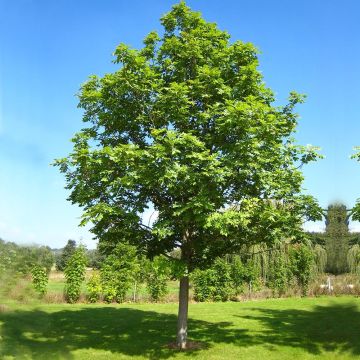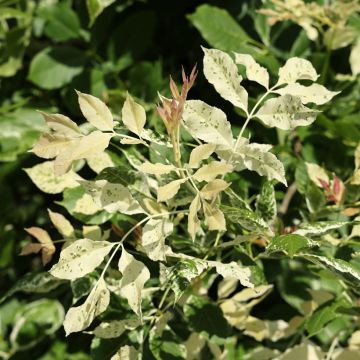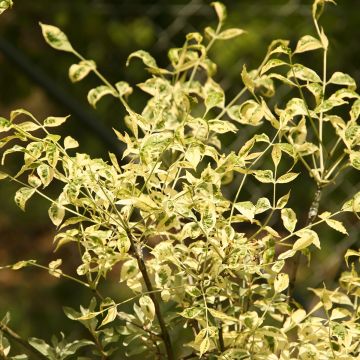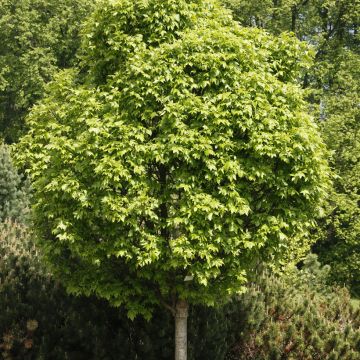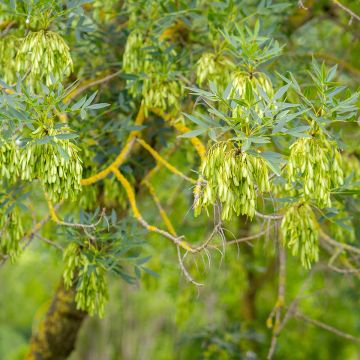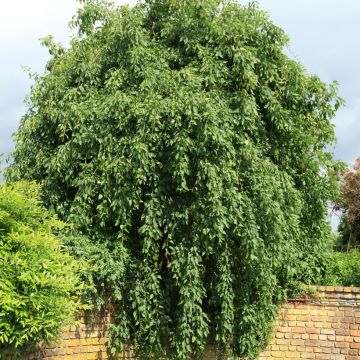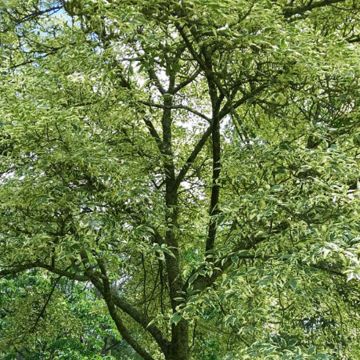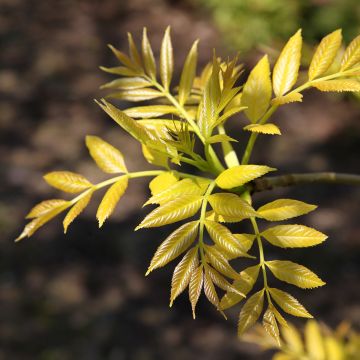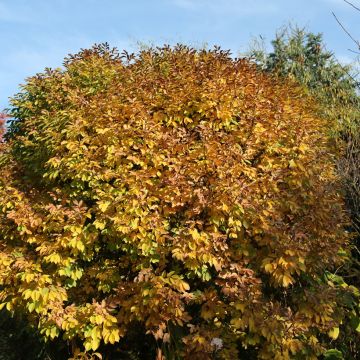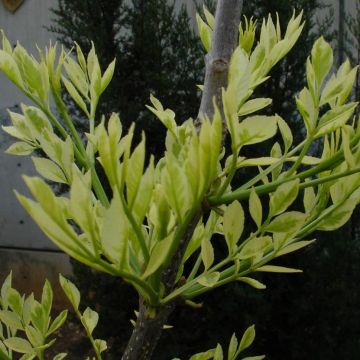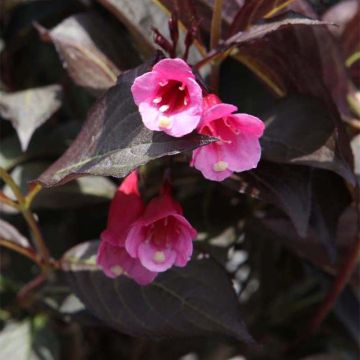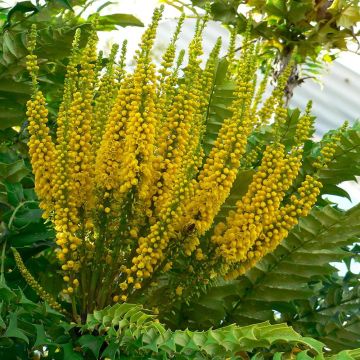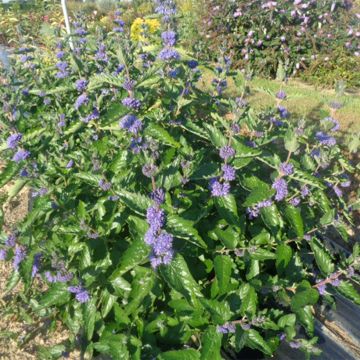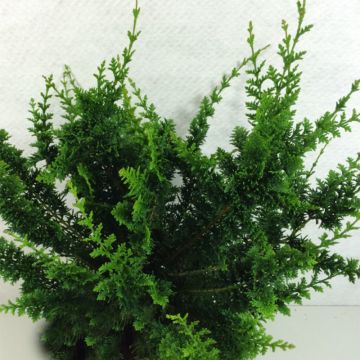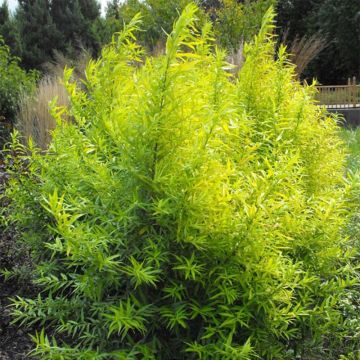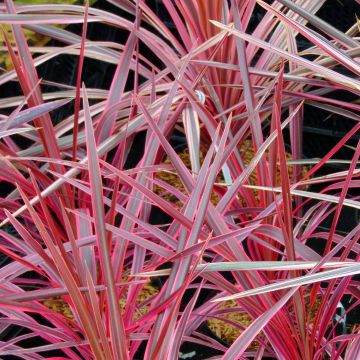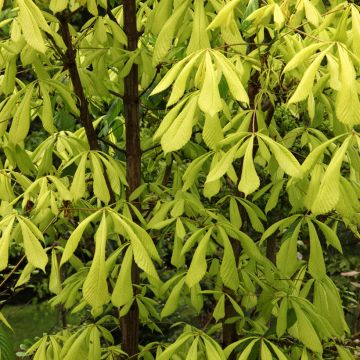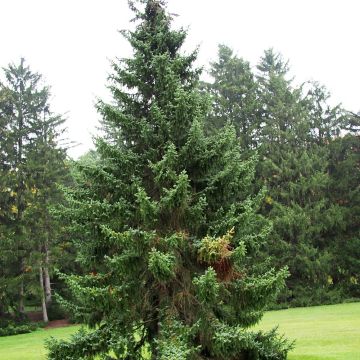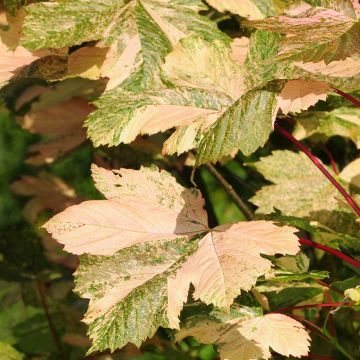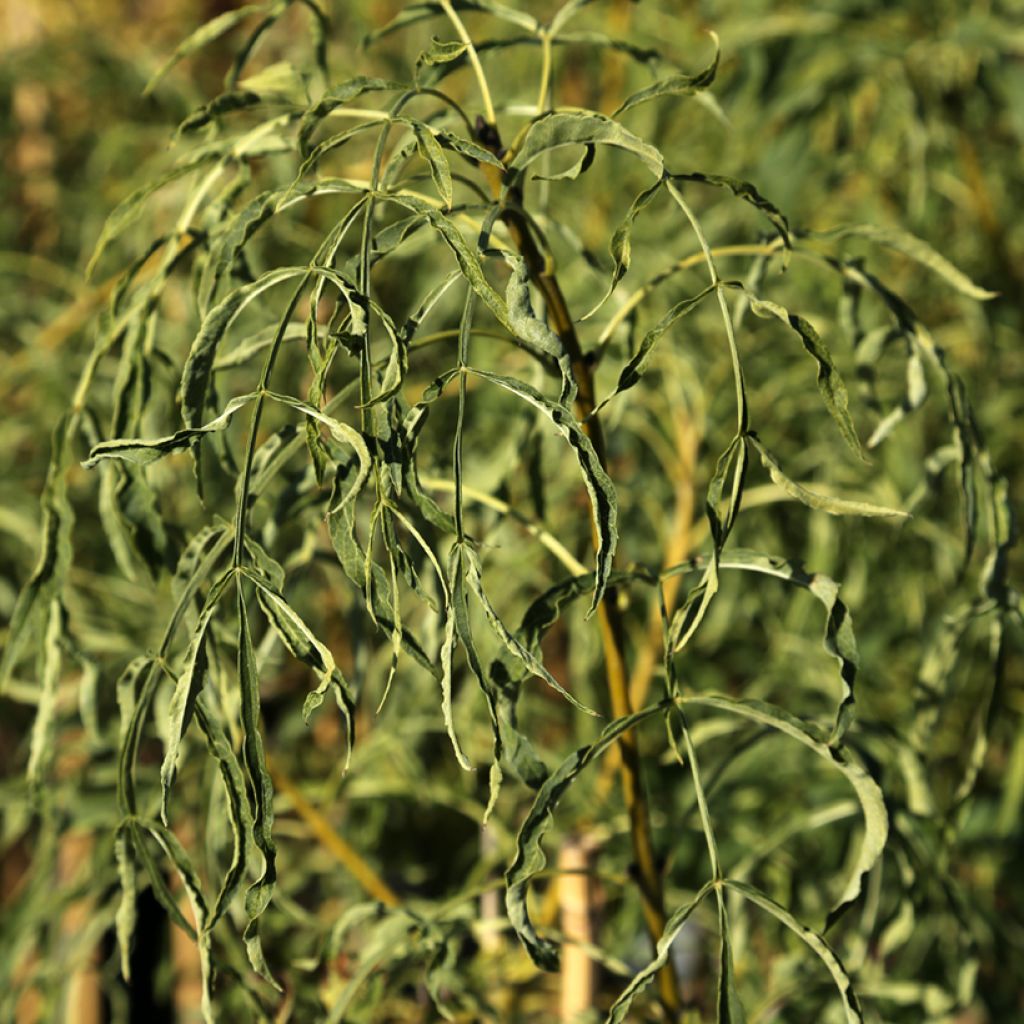

Fraxinus excelsior Aarsee - Fresno norteño
Fraxinus excelsior Aarsee - Fresno norteño
Fraxinus excelsior Aarsee
Fresno norteño, Fresno de hoja, Fresno común, Fresno europeo, Fresno negro
Este artículo no puede enviarse al país seleccionado
Artículos grandes, gastos de envío a partir de 6,90 €
Más información
País de entrega:
-
Alemania
-
Andorra
-
Austria
-
Bulgaria
-
Bélgica
-
Chequia
-
Chile
-
Chipre
-
Croacia
-
Dinamarca
-
Eslovaquia
-
Eslovenia
-
España
-
Estonia
-
Finlandia
-
Francia
-
Grecia
-
Hungría
-
Irlanda
-
Islandia
-
Italia
-
Letonia
-
Lituania
-
Luxemburgo
-
Malta
-
Mónaco
-
Países Bajos
-
Polonia
-
Portugal
-
Rumanía
-
Suecia
-
Suiza
Programa tu fecha de entrega,
y elige tu fecha en la cesta
24 meses de garantía en el desarrollo de esta planta
Más información
Garantizamos la calidad de nuestras plantas durante un ciclo vegetativo completo, y sustituiremos a nuestro cargo cualquier planta que no se recupere en condiciones climáticas y de plantación normales.
Artículo voluminoso: entrega a domicilio únicamente con un coste de 6,90 € por pedido..
Entrega a domicilio exprés en 24-48 horas: 8,90 €.
¿Esta planta es adecuada para mi jardín?
Crear mi perfil Plantfit →
Descripción
El Fraxinus excelsior ‘Aarsee’ es una rareza vegetal, una variedad de Fresno norteño que sorprenderá a más de uno. Este pequeño árbol de crecimiento lento a moderado es notable por su follaje compuesto con folíolos de tamaño muy reducido. En los brotes del año, las hojas incluso pueden reducirse simplemente a las nervaduras, dando a la planta un aspecto extremadamente extraño, vagamente fantasmagórico. Más curioso que realmente hermoso, gustará especialmente a los aficionados a las plantas poco comunes. Fácil de cultivar en la mayoría de los suelos frescos, se puede plantar aislado o en un macizo junto con otras plantas originales.
El Fresno pertenece a la familia de los Oléaceos, que incluye muchas plantas de interés ornamental, a menudo perfumadas, como los Jazmines (Jasminum) o el Lilo (Syringa) y también el venerable Olivo (Olea) que le dio su nombre. Existen alrededor de sesenta y cinco especies de Fresnos, principalmente árboles y algunos arbustos, reconocibles (con raras excepciones) por sus hojas imparipinnadas (compuestas por folíolos en número impar debido al folíolo terminal), generalmente opuestas o a veces agrupadas de tres en tres. Fraxinus excelsior es nuestro Fresno norteño, uno de los árboles más grandes de Europa ya que puede alcanzar los 30 m de altura. Su tronco generalmente recto tiene una corteza inicialmente gris y lisa, que con el tiempo se oscurece y agrieta. Sus hojas compuestas miden de 20 a 30 cm de longitud y constan de 7 a 13 folíolos lanceolados. La floración amarillo verdosa evoluciona en sámaras elípticas de 3 a 4 cm de longitud. Es común en los bosques y en las orillas de los ríos y puede vivir entre 150 y 200 años.
El Fraxinus excelsior ‘Aarsee’ presenta un aspecto muy diferente al de la especie tipo. De tamaño más reducido, en 10 a 20 años de cultivo, solo alcanzará una altura de 5 a 10 m, con una anchura de copa de 5 a 7 m. Su crecimiento es más lento que el de la especie botánica debido a su superficie foliar reducida, lo que resulta en una menor actividad fotosintética. Sin embargo, su crecimiento moderado es aún más rápido que el de los cultivares enanos. Sus ramas con extremos verdosos en su juventud se vuelven grises con la edad. Tienden a comenzar su crecimiento más o menos en horizontal para luego enderezarse hacia arriba, creando una copa más o menos esférica, con una forma de cúpula un poco suelta.
El follaje aparece bastante tarde en primavera como suele ocurrir con los Fresnos. Las hojas constan de 5 a 11 folíolos y presentan diversas morfologías. En los tramos de ramas más antiguos, son relativamente "normales", pudiendo ser simplemente un poco más pequeñas que en la especie silvestre y a veces también un poco deformadas. En cambio, en las ramas del año, los folíolos son muy estrechos, las hojas adquieren un aspecto estrecho, y en los casos más extremos, ¡el limbo foliar se reduce a las nervaduras solamente! ¡Estos brotes a menudo también tienen un aspecto crispado, con ligeras decoloraciones amarillentas que se asemejan a algunos síntomas de virus. ¡Se ama o se odia! La floración insignificante no tiene interés ornamental.
El Fresno norteño 'Aarsee' es una criatura vegetal especial que complacerá a los coleccionistas. Este pequeño árbol muy resistente (hasta -30 °C) puede integrarse en un "bizarretum" formado por otras plantas con siluetas extrañas. Su follaje muy recortado proporcionará una sombra ligera que será adecuada para algunas plantas que temen el pleno sol. Plante junto a él un Cryptomeria japonica 'Cristata', un ciprés japonés que presenta la particularidad de formar en los extremos de las ramas crestas de gallo compuestas por brotes jóvenes fusionados entre sí, y que rivalizarán en rareza con tu Fresno. El Avellano contorto (Corylus avellana 'Contorta') con una silueta invernal extravagante debido a sus ramas onduladas como serpientes también será un hermoso ejemplar para integrar en tu escena. Otra curiosidad vegetal, el Robinia pseudoacacia 'Twisty Baby' es un Acacia de pequeño tamaño que presenta una ramificación fina y retorcida totalmente original, que se adaptará perfectamente al espíritu de tu decoración vegetal.
Informar de un error en la descripción del producto
Porte
Floración
Follaje
Precauciones
Botánica
Fraxinus
excelsior
Aarsee
Oleaceae
Fresno norteño, Fresno de hoja, Fresno común, Fresno europeo, Fresno negro
Hortícola
atteinterespiratoire
Cette plante peut entraîner des symptômes allergiques.
Evitez de la planter si vous ou vos proches souffrez de rhinite saisonnière ("rhume des foins").
Davantage d'informations sur https://plantes-risque.info
Fresno - Fraxinus: Otras variedades
Plantación y cuidados
Plantea tu Fraxinus excelsior 'Aarsee' en otoño o a principios de primavera, elige un lugar despejado, en posición soleada o a media sombra. Si es necesario, hazle un pozo de drenaje con piedras si tu suelo es muy arcilloso y asfixiante. Si tu suelo es pobre, una aportación de compost de hojas y tierra de plantación será beneficiosa al aumentar la retención de agua, ya que le gusta los suelos frescos e incluso húmedos. Mantén un riego regular durante el verano siguiente a la plantación y asegúrate de protegerlo de sequías demasiado largas durante otro año; un acolchado puede ayudarte a mantener la frescura en la base y a espaciar los riegos. Este árbol necesita un suelo fresco constantemente, al menos en profundidad. Es perfectamente resistente a las heladas, hasta aproximadamente -30°C. La poda no es necesaria, aunque puede justificarse si deseas darle una forma particular para reforzar aún más la extrañeza de su aspecto general.
¿Cuándo plantar?
¿En qué lugar?
Cuidado
Este artículo todavía no ha recibido comentarios; sé el primero en compartir tu experiencia.
Arbustos de follaje excepcional
¿No has encontrado lo que buscas?
La rusticidad es la temperatura invernal más baja que una planta puede soportar sin sufrir daños graves o incluso la muerte. Sin embargo, la rusticidad se ve afectada por la ubicación (zona protegida, como un patio), la protección (cubierta de invierno) y el tipo de suelo (la rusticidad mejora con un suelo bien drenado).

Condiciones generales de uso del servicio de fotos del cliente
Con el fin de favorecer la interacción y el intercambio de experiencias entre jardineros, Promesse de fleurs ofrece varios servicios que permiten cargar contenidos en su Sitio web, en particular a través del módulo "Compartir fotos".
El usuario se compromete a no:
- Publicar contenidos ilegales, perjudiciales, insultantes, racistas, que inciten al odio, revisionistas, contrarios a las buenas costumbres, que atenten contra la vida privada o vulneren los derechos privados de terceros, en particular el derecho a la imagen de las personas y de los bienes, los derechos de propiedad intelectual o el derecho a la vida privada
- Publicar contenidos en nombre de un tercero
-
Asumir la identidad de un tercero y/o publicar cualquier información personal sobre un tercero
En general, los Usuarios se comprometen a abstenerse de cualquier comportamiento poco ético.
Todos los Contenidos, en particular, textos, comentarios, archivos, imágenes, fotos, vídeos, obras, etc., que pueden ser objeto de derechos de propiedad, derechos de propiedad intelectual, derechos de imagen u otros derechos privados, siguen siendo propiedad del Usuario, a reserva de los derechos limitados concedidos por la licencia definida a continuación a Promesse de fleurs. El Usuario es libre de publicar o no dicho Contenido en el Sitio web, especialmente a través del servicio "Compartir fotos", y acepta que este Contenido se haga público y libremente accesible, especialmente en Internet.
Reconocen, se comprometen y garantizan que disponen de todos los derechos y autorizaciones necesarios para dicha publicación en el Sitio, en particular en lo que respecta a la legislación vigente y a los derechos de privacidad, propiedad, propiedad intelectual, imagen, contratos o de cualquier otra naturaleza. Al publicar dicho Contenido en el Sitio, el Usuario es consciente de que compromete su responsabilidad como editor del Contenido en el sentido de la ley, y concede a Promesse de fleurs una licencia no exclusiva, gratuita y mundial para dicho Contenido, durante toda la duración de su publicación, incluidos los derechos de reproducción, representación, carga, visualización, ejecución, transmisión y almacenamiento.
Los usuarios también autorizan a que su nombre se asocie al Contenido y aceptan que esta asociación no siempre pueda realizarse.
Mediante su publicación, los usuarios autorizan que los Contenidos sean automáticamente accesibles en Internet, en particular en otros sitios y/o blogs y/o páginas web del sitio Promesse de fleurs, incluidas en particular las páginas de las redes sociales y el catálogo de Promesse de fleurs.
Los usuarios pueden obtener libremente la devolución de los contenidos confiados poniéndose en contacto con el servicio de atención al cliente a través del formulario de contacto.
Los periodos de siembra indicados en nuestro sitio web se aplican a los países y regiones de la zona 8 del USDA (Francia, Reino Unido, Irlanda, Países Bajos).
En zonas más frías (Escandinavia, Polonia, Austria...), retrase 3-4 semanas cualquier siembra al aire libre, o siembre en invernadero.
En climas más cálidos (Italia, España, Grecia, etc.), adelante unas semanas la siembra al aire libre.
El periodo de recolección indicado en nuestro sitio web se aplica a los países y regiones de la zona USDA 8 (Francia, Inglaterra, Irlanda, Países Bajos).
En las zonas más frías (Escandinavia, Polonia, Austria...) es probable que la cosecha de frutas y hortalizas se retrase 3-4 semanas.
En las zonas más cálidas (Italia, España, Grecia...), es probable que la cosecha se adelante, dependiendo de las condiciones meteorológicas.
El periodo de plantación indicado en nuestro sitio web se aplica a los países y regiones situados en la zona USDA 8 (Francia, Reino Unido, Irlanda, Países Bajos).
Variará en función de su lugar de residencia:
- En las zonas mediterráneas (Marsella, Madrid, Milán, etc.), el otoño y el invierno son los mejores periodos de plantación.
- En las zonas continentales (Estrasburgo, Múnich, Viena, etc.), retrase la plantación de 2 a 3 semanas en primavera y adelántela de 2 a 4 semanas en otoño.
- En las regiones montañosas (Alpes, Pirineos, Cárpatos, etc.), es mejor plantar a finales de primavera (mayo-junio) o a finales de verano (agosto-septiembre).
En climas templados, la poda de los arbustos de floración primaveral: forsitia, spireas, etc. debe realizarse justo después de la floración.
La poda de los arbustos de floración estival: árbol de Júpiter, perovskia, etc. puede realizarse en invierno o en primavera.
En las regiones frías y con plantas sensibles a las heladas, evite podar demasiado pronto, cuando aún pueden producirse heladas severas.
El periodo de floración indicado en nuestra página web se aplica a los países y regiones situados en la zona USDA 8 (Francia, Reino Unido, Irlanda, Países Bajos, etc.).
Variará en función de su lugar de residencia:
- En las zonas 9 a 10 (Italia, España, Grecia, etc.), la floración se producirá entre 2 y 4 semanas antes.
- En las zonas 6 a 7 (Alemania, Polonia, Eslovenia y regiones montañosas bajas), la floración se retrasará de 2 a 3 semanas.
- En la zona 5 (Europa Central, Escandinavia), la floración se retrasará de 3 a 5 semanas.

